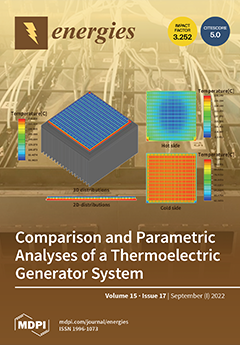This study evaluated leachate recirculation (LR) as a stabilisation strategy for landfills using bioreactor experiments with excavated waste from a tropical landfill in Colombia. The experimental evaluation was performed in two 115 L bioreactors, one simulating the operation of a landfill with LR,
[...] Read more.
This study evaluated leachate recirculation (LR) as a stabilisation strategy for landfills using bioreactor experiments with excavated waste from a tropical landfill in Colombia. The experimental evaluation was performed in two 115 L bioreactors, one simulating the operation of a landfill with LR, Br2, where the leachate produced was recirculated at a rate of 0.8 L d
−1, and a control system without LR, Br1. Both systems reached stabilisation indicator values on a dry matter (DM) basis for volatile solids VS (<25% DM) and a biochemical methane potential BMP (≤10 mL CH
4 g
−1 DM). Likewise, towards the end of the experiment, the leachate generated in Br2 reached stabilisation indicator values for BOD
5 (<100 mg L
−1) and the BOD (biological oxygen demand)/COD (chemical oxygen demand) ratio (<0.1). Although the stabilisation criterion for COD was not met in any bioreactor (<200 mg L
−1), LR helped to release 19% more oxidisable organic matter in Br2 than in Br1, indicating a reduction in the contaminating potential of the waste in the case of uncontrolled discharges of leachate to the environment. Regarding biogas production, the generation of CH
4 in Br2 was more intense and its cumulative production was 34.5% higher than Br1; thus, Br2 achieved CH
4 emission rates, indicating waste stabilisation (<1.0 L CH
4 m
−2 h
−1) sooner than Br1, showing an accelerating effect of LR on waste degradation. A carbon mass balance indicated that waste degradation, in terms of the initial total organic carbon mineralisation and the C gas discharge via CH
4, was greater in Br2. These results demonstrate the LR potential to accelerate the stabilisation of a landfill but also to reduce greenhouse gas emissions in final disposal sites where biogas is also captured and utilised for energy production; a key aspect when improving the sustainability of landfill operations in developing countries.
Full article





